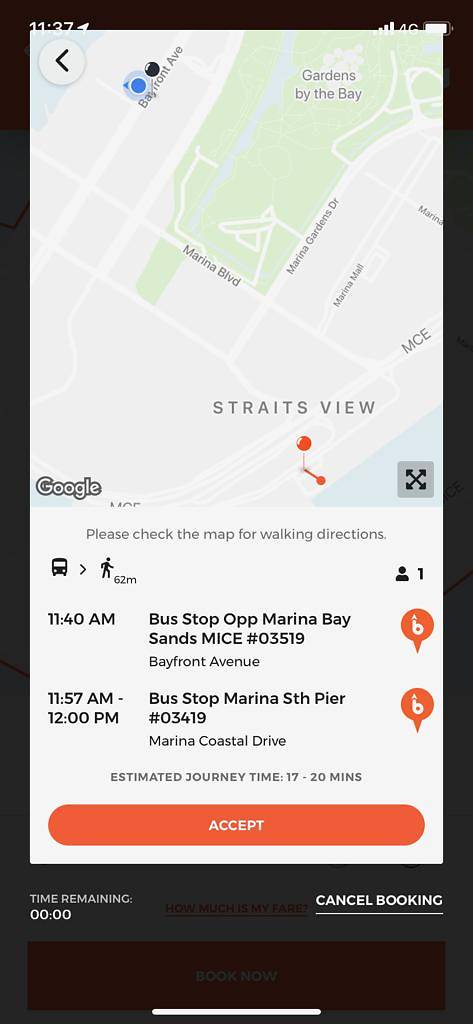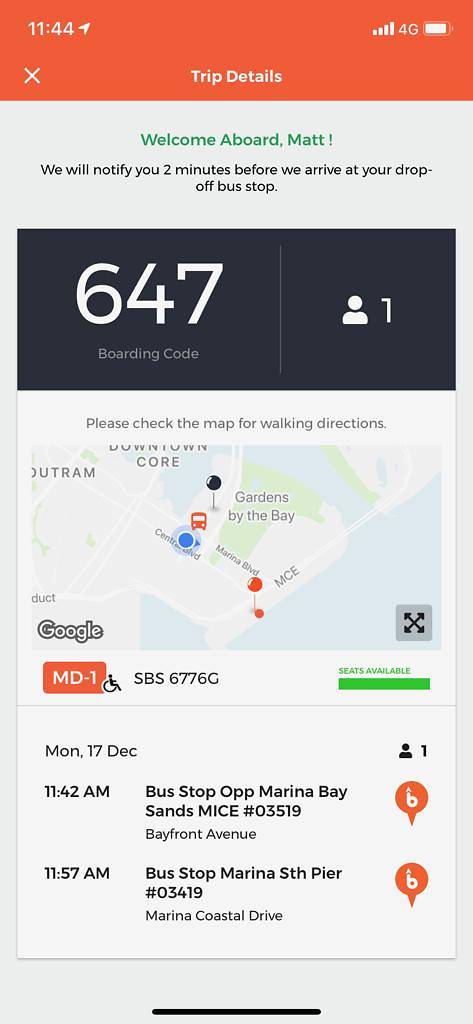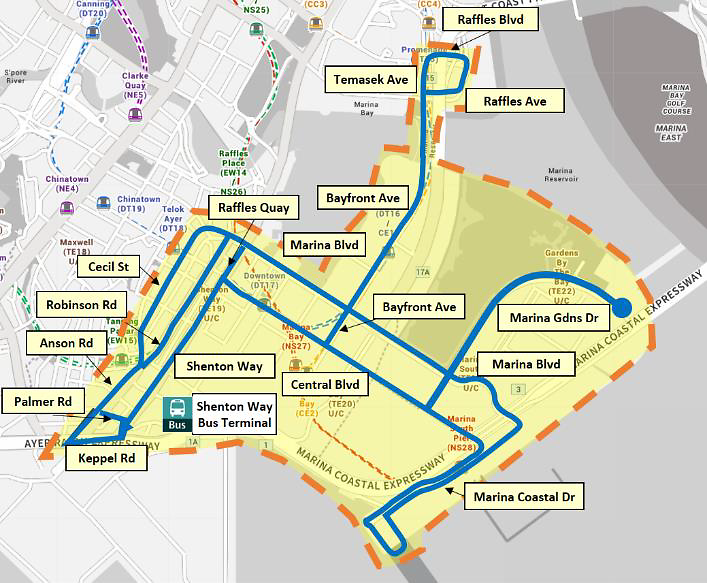SINGAPORE: Imagine having a public bus service at your beck and call, all for less than a dollar.
A far-fetched idea to some perhaps, but I had a taste of what that would be like on Monday (Dec 17) as the Land Transport Authority (LTA) began the first part of its trial of on-demand public bus (ODPB) services.
The trial allows commuters in the Joo Koon and Marina-Downtown areas to request pick-ups and drop-offs at any bus stop on weekdays from 11am to 3pm.
They can also arrange for pick-ups and drop-offs on weeknights, from 8.30pm to 11.30pm within Joo Koon and until 11.45pm within Marina-Downtown. These day services will be operated by SBS Transit and are available until Jun 15.
DOWNLOADING THE APPS
Weekday bookings for ODPB services in Joo Koon have to be done via mobile app BusGo. A separate app, BusNow, is required for the weekday service in Marina-Downtown, as well as the weekend night services serving the CBD to Bedok and Tampines route.
Having downloaded the BusNow app, booking a ride of my own within the Marina-Downtown area proved a breeze.
The app accurately detected the bus stop I was at along Bayfront Avenue. After I keyed in my drop-off location – in this case, a bus stop at Marina South Pier – I was matched to an ODPB, which was five minutes away.
Note that should the wait prove to be too long, the app is able to alert passengers to regular services that can get them to their desired location quicker.
The ODPB services are easily identified by their service numbers: for example MD-1 and MD-2 for buses serving the Marina-Downtown route and NB-1, NB-2 for night buses.
The app also include options for group bookings, walking directions to the pick-up point and instructions and allows passengers to indicate if they require wheelchair space

The app interface when making a booking on BusNow. (Photo: Matthew Mohan)
The good thing about the app is the real-time location tracking service, which allowed me to see where the bus I was matched to – in this case, MD-1 – was up to 15 minutes before its arrival.
It also sent me an alert two minutes before we arrived at my drop-off point – useful for those who don’t know where they are going.

The BusNow app interface after boarding an ODPB bus service. (Photo: Matthew Mohan)
Getting on the single-decker bus, all I needed to do was to swipe my phone to produce a boarding code for the bus captain, before tapping my EZ-Link card as per normal.
FEW PASSENGERS
While I knew that the ODPB service is meant for off-peak hours, when there are fewer passengers, I was still surprised to note that I was the only commuter during my first bus ride – apart from personnel from the LTA and staff from local firm Ministry of Movement (Swat), one of the two companies awarded the contracts to carry out the ODPB trials and develop the mobile apps.
But this also meant a quicker ride for me, as there were no other pick-ups or drop-offs during my journey.
With no other passengers, I was able to reach my destination in under 20 minutes – well within the estimated journey time indicated by the app.
The price of my trip? A mere S$0.77, the same amount I would have paid for a normal SBS Transit bus service for a distance of up to 3.2km.
Passengers trying the weekday on-demand services are entitled to a promotional adult fare based on a fixed distance of 3.2km, regardless of the actual distance travelled. This works out to S$0.77 for farecard and S$1.40 for cash before Dec 29, and S$0.83 for farecard and S$1.50 for cash after.

Map showing the route for ODPB services in Marina-Downtown. (Graphic: LTA)
Night services are currently at a promotional flat fare of S$4.50, which is the existing fare of the NightRider NR7.
PASSENGER REVIEWS
Several passengers I spoke to said they were not aware of the apps needed to book the rides, indicating some teething issues with awareness.
One of the commuters who did try the ODPB service was shipping agent Low Chong Gee, who was headed to Shenton Way.
“Today was my first time using the app so I was a little confused as to how it worked,” he said. “But I think after a while, I will get used to it.”
Mr Low, who usually relies on bus service 402, said that the waiting time for an ODPB was similar, but that the on-demand option gives him an added element of convenience.
“I wouldn’t mind trying it again tomorrow,” he said. “To me the most important thing is the waiting time for the bus.
Mr Low Chong Gee tries out the BusNow app. (Photo: Matthew Mohan)
At the International Plaza bus stop, Mr Manikandan Chandrasekaran was the only passenger to board an ODPB. He said he was impressed by the efficiency of the app and how quickly the bus arrived.
“I gave it a try and when I turned around, the bus was there,” said Mr Chandrasekaran, who usually relies on a shuttle bus with a limited number of services to get to and fro from his office.
“The app interface was like using Grab – it was easy,” he said. “It was slick … I think this is better than a taxi.”
Another solo passenger was Mr Hans Ng, who usually relies on bus service 400 to get to his work place at Marina Barrage.
“The interval between each bus is 15 to 20 minutes but with this booking app, the bus reached within five minutes,” said Mr Ng, who had mistakenly downloaded the BusGo app instead of the BusNow app required for the Marina-Downtown area. “I felt the bus ride was also faster because it did not stop at each bus stop.”
During the trial, regular bus services serving the areas specified will still be available, though at lower frequencies. For example, services 253, 255 and 257 in Joo Koon will operate at intervals of 30 minutes instead of their usual 15 minutes, while services 400 and 402 in Marina-Downtown will operate at intervals of 40 minutes instead of 20 minutes previously.
The second part of the trial will make available night services on Fridays, Saturdays and eve of public holidays from 11.30pm to 2am. These will go in one direction only – from the Central Business District (CBD) to Bedok and Tampines via Geylang.
The night services will be operated by SMRT Buses and are available from Jan 4 to Jun 15.




